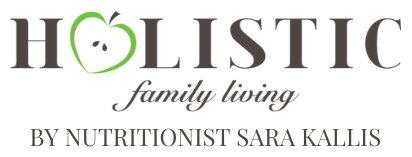
In our fast-paced world, many of us fall into the habit of mindless eating. You know, those times when we’re quickly devouring a meal before rushing into our next meeting, munching away while driving the kids to school, mindlessly snacking while scrolling through social media or watching TV, or even eating at our desks while working. These common scenarios can lead to overeating, unhealthy food choices, and eating too quickly. Not to mention, not chewing our food thoroughly can cause digestive problems like acid reflux, heartburn, bloating, and abdominal pain, among others. It can also affect nutrient absorption and leave us feeling irritable, mentally foggy, or even experiencing skin issues.
That’s where mindful eating comes in. It’s about consciously tuning into our bodies, minds, and senses to truly engage with the experience of eating. It means paying attention to how we feel before, during, and after a meal, and being aware of our emotional and physical responses. Mindful eating offers numerous benefits, such as:
- Supporting digestion and nutrient absorption,
- Reducing stress and anxiety by stimulating the parasympathetic nervous system (our “rest and digest” mode),
- Helping us recognize unhealthy eating patterns like overeating, eating when we’re not truly hungry, or turning to food for emotional reasons,
- Encouraging us to make more sustainable, healthy food choices, and
- Increasing pleasure and enjoyment in eating.
So, how can we practice mindful eating? Well, here are some steps you can take:
-
Make time for eating: Set aside at least 15 minutes to sit and eat. Create a designated time and place for it.
-
Minimize distractions: Tune out the distractions like your phone, television, computer, book, or magazine. Give your full attention to the act of eating.
-
Get comfortable: Straighten your back, relax your shoulders, and place your feet on the floor. Find a comfortable posture that allows you to focus on your meal.
-
Enter the present moment: Close your eyes or relax your gaze, and take a few deep breaths to bring yourself into the present moment. Let go of any distractions or thoughts about the past or future.
-
Check-in with yourself: Take a moment to observe your thoughts and feelings. Are you feeling stressed, happy, content, or tired? Acknowledge your current state of mind.
-
Connect with your body: Bring your attention to your body. Consciously relax any muscles that may be holding tension. Pay attention to physical sensations and any signals your body may be sending.
-
Engage your senses: Smell the aroma of your food and notice how your body responds. Do you feel hunger pangs or salivation? As you open your eyes, appreciate the colours, presentation, and appeal of your food.
-
Take mindful bites: Consciously pick up your cutlery or food, and take your first bite. Pay attention to the texture and flavour. Is it light, dense, moist, dry, crunchy, smooth, sweet, spicy, salty, or bitter?
-
Chew thoroughly: Rest your cutlery next to your plate between mouthfuls. Chew slowly and thoroughly, allowing the food to lose all texture before swallowing. Aim for about 25 chews per bite.
-
Notice your thoughts and feelings: Be aware of the thoughts and feelings that arise as you eat. Are you experiencing happiness, pleasure, nostalgia, or even guilt? Observe without judgment.
-
Eat until satisfied: Aim for about 80% fullness and allow yourself to leave some food on your plate.


